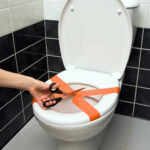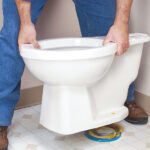Understand how a toilet works. Includes a cross section diagram of a toilet, definitions of toilet bowl parts, and how a toilet flush works.
If you’re trying to sort out why your toilet isn’t operating right, start by familiarizing yourself with the basic workings of a toilet and toilet system. Refer to the toilet cross section diagram below.
A toilet has two main parts—the tank and the bowl (with many toilets, these are one piece). The bowl holds water and connects to the drain for disposing of waste water and waste. The tank, which sits up behind the bowl, contains reserve water for refilling the bowl plus the devices for flushing clean water into the bowl and refilling the tank.
One of these devices—called a fill valve—is connected to the water supply and controls delivery of water to the tank. When you flush a toilet, the flush lever lifts a flapper that allows the tank’s water to rapidly drop down into the bowl. The pressure causes the bowl’s waste water to go down the toilet system’s drain. The drop in the tank’s water level is sensed by a float, ball, or pressure gauge in the fill valve, and this triggers water to refill the tank through the flush valve. When the tank is full, the water shuts off.
What is a toilet flapper?
This is how a toilet flush works: When a conventional toilet is flushed, water from the tank rushes into the bowl through an orifice called the flush valve. Before you trip the lever, this valve is plugged with a rubber rubber flapper or a stopper called a tank ball.
The valve and the flapper together are called—not surprisingly—the flapper valve. Tripping the lever simply lifts the rubber flapper off the valve and…whoosh, the water flows into the toilet bowl.
A flush valve is 2 1/2 inches in diameter as is the ball-shaped part of the flapper. The flapper hinges onto the vertical overflow pipe that’s next to the valve, and a small chain connects the flapper to the trip lever. The advantage of a flapper over the earlier stoppers is that it doesn’t have as many parts to foul or get hung up so it’s less likely to let the tank “run” or leak into the bowl.



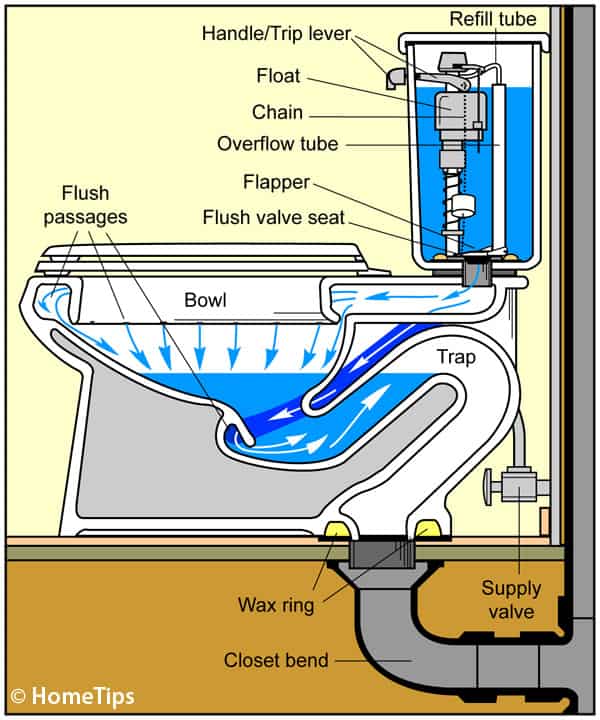
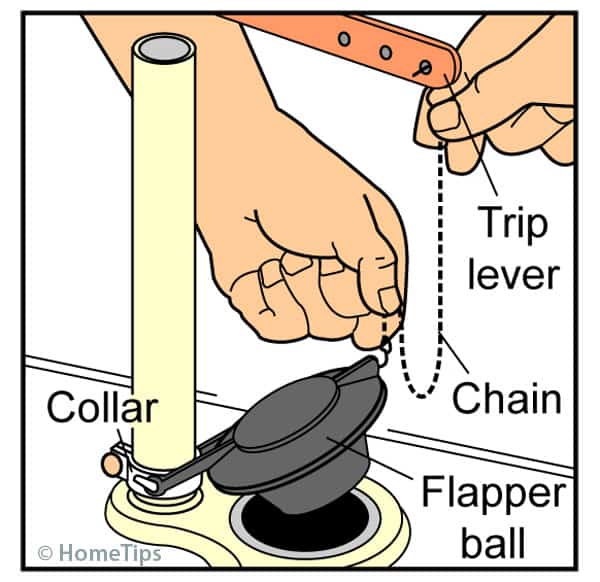
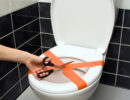


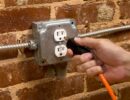
 Don Vandervort writes or edits every article at HomeTips. Don has:
Don Vandervort writes or edits every article at HomeTips. Don has:
